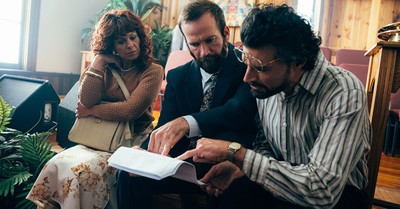5 Things You Lose When You Give Up Your Hymnals
-
Carrie Dedrick What topic related to Christianity, faith, and the Bible is trending online and in social media today?
- Updated May 10, 2019
My (very traditional) church just recently installed two 80-inch screens in the sanctuary. One is in the front, for the congregation to see, and the other is in the rear of the church facing the choir.
The decision to install the screens came after a “Technology Committee” met periodically for three years to determine what technology best suited the church’s needs, then pitched the idea of screens to the congregation, who voted to spend thousands of dollars on the project.
The screens are now used to scroll church announcements before the service begins, to display Scripture as it is read, to show photos of mission trips and service work, and can be used to play videos that complement the sermon.
There is one thing the screens do not do: Show the lyrics of the hymns we sing.
It would certainly be possible for the video screens to display the lyrics of “Amazing Grace,” “Blessed Assurance,” and “Great is Thy Faithfulness,” but they won’t because the church found it of utmost importance to continue to use our hymnals.
A physical copy of a hymnal might not seem that important when you can display the same words of a song on a screen. However, when we cast aside our copies of hymnals in favor of technology, we lose more than some dusty old paper.
Blogger Tim Challies writes that his church is one of the many that has put away their hymnals for good. And while this is not inherently sinful or wrong, he points out that there is value in taking note of what is lost when technology takes the place of tradition.
1. You lose an established body of songs.
Challies writes, “Hymnals communicated that a church had an established collection of songs. This, in turn, communicated that its songs were vetted carefully and added to its repertoire only after careful consideration. After all, great songs are not written every day and their worth is proven only over time.”
There is something to be said about having songs documented for years and generations. Another church I attend uses the PowerPoint method, and while I truly enjoy the songs, I couldn’t even tell you most of the titles (and I am on the worship team!).
2. You lose a deep knowledge of your songs.
“As we add new songs with greater regularity, we sing old songs with less frequency. This reduces our familiarity with our songs so that today we have far fewer of them fixed in our minds and hearts,” Challies writes.
New songs are great, but that doesn’t mean we should lose the old ones. When the old ones are catalogued in hymnals, they are less likely to be forgotten altogether.
3. You lose the ability to do harmonies.
This is the reason that my church said that our shiny, new screens would not be used for singing. We are a church that still reads music and harmonizes. The congregation as a whole felt it was important that we keep this part of our identity, despite introducing our church to the 21st century.
As Challies says, “Hymns were most often written so they could be sung a cappella or with minimal instrumentation. For that reason, hymnals almost invariably included the music for both melody and harmonies and congregations learned to sing the parts.”
4. You lose the ability to sing skillfully.
With the loss of the hymnal comes the loss of reading music. And with the loss of reading music comes meager worship.
“We tend to compensate for our poorly-sung songs by cranking up the volume of the musical accompaniment. The loss of the voice has given rise to the gain of the amplifier. This leads to our music being dominated by a few instrumentalists and perhaps a pair of miced-up vocalists while the larger congregation plays only a meager role,” Challies writes.
5. You lose the ability to have the songs in your home.
Challies says, “Hymnals usually lived at the church, resting from Monday to Saturday in the little pockets on the back of the pews. But people also bought their own and took them home so the family could have that established body of songs there as well.”
My parents still have a hymnal in their home, even though their church switched to screen-singing years ago. I would often (badly) bang out the tunes on the piano, but my grandmother (the church organist) would play them as they were intended to be played. But the loss of the hymnal would make family worship look very different today.
As I said before, your church has not sinned if you’ve already packed away the hymnals. As long as you are still singing and worshiping God, you’re obeying Scripture.
“Make a joyful noise unto the Lord, all ye lands. Serve the Lord with gladness: come before his presence with singing.” (Psalm 100:1-2)
Crosswalk.com contributor Dawn Wilson writes, “...singing in church is powerful to help unbelievers know more about God and His ‘wondrous works’ (Psalm 105:1-2), but it also builds up the Body of Christ. We are strengthened as we hear people confessing truth together, taking on the enemy together. Singing builds unity with purpose.
“It’s not the style, but the focus of the song that unites believers. Jesus, our Savior, must be at the center of our singing. He is to occupy the core of our worship, because He is the reason we can praise.”
Carrie Dedrick is an editor of Crosswalk.com. When she is not writing or editing, she can usually be found teaching dance classes, running marathons, or reading with at least one adopted dog on her lap.
Photo credit: ©Thinkstock/Ingram Publishing


















